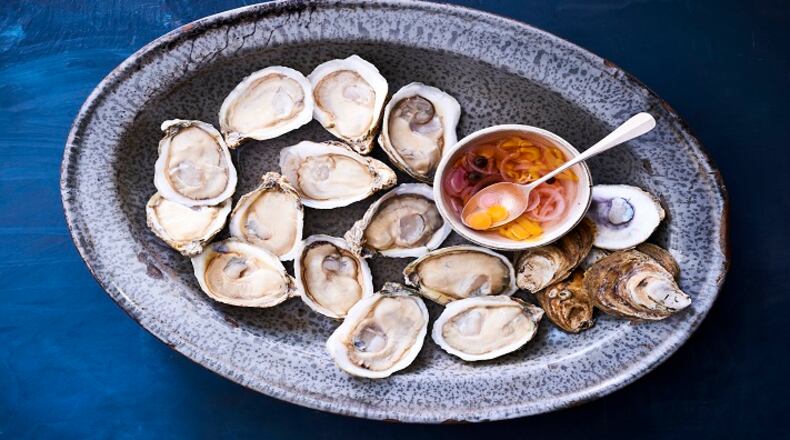Just as they were thousands of years ago, oysters remain a very healthy food with a lot of nutritional value, low in calories and fat and rich in iron, calcium, selenium, vitamin A and vitamin D and especially zinc.
Credit: Sarah Swetlik
Credit: Sarah Swetlik
Oysters are versatile in cooking and can be found on menus in preparations ranging from raw to roasted to Rockefeller and everything in between. I love these slimy salty mollusks but I get why they may not be for everyone, that said, there are preparations that can completely change them in terms of flavor and texture.
There are more than 150 species of oysters spread across the world, but there are just five varietals that are harvested in North America — Pacific oysters, Kumamoto oysters, Atlantic oysters, European oysters and Olympia oysters.
Credit: Contributed
Credit: Contributed
Just because it’s the same species doesn’t mean an oyster will taste the same. Because oysters filter so much water, they develop flavor profiles from the environment they are in with the water, nutrients, salinity and the time of year they are harvested all contributing to the flavor.
Not all oysters are alike. They are briny, they are mild, they are petite and XL, they are east coast and west coast and silky, springy and meaty. Flavors descriptions vary with briny, buttery, creamy, crisp, sweet, metallic and mild with flavors of melon, cucumber, minerals and many more being used.
Credit: Yvette Cardozo
Credit: Yvette Cardozo
Here are the five types of oysters and what to know about them.
Pacific oysters: This species was brought to the U.S. from Japanese immigrants in the 1920s. Farmers will use their own names for their crops like Capital and Shigoku oysters from Washington, Kusshi oysters from British Columbia, and Hog Island Sweetwaters from California. This species, sometimes called Gigas, is preferred by many chefs and consumers, grows and reproduces quickly. “Melon” is the word most often associated with these West coast bivalves that are slightly sweet with mild fruit and vegetable notes and medium salinity.
Atlantic or Eastern oysters: Since 1990, an average of 78% of all wild oysters harvested on the planet have been Atlantic oysters, with a whopping 66% of them hailing from the United States according to Food & Wine. These meaty oysters can be found lining the entire Atlantic coast from north to south into the Gulf of Mexico. These are large with flavor that can vary wildly depending on their location and water temperature with the further north yielding much brinier, saltier meat. These oysters may be from the same exact family, but the geographic location they have been harvested from will yield completely very different flavors.
Kumamoto oysters: This variety is grown in three regions — Washington, California and Baja. They are small and delicate and take longer to grow despite their small size. They are low in salinity with sweet fruit or grassy notes depending on where they were harvested.
Olympia oysters: This Washington state species (the only one indigenous to the West Coast) was the favorite of James Beard. With dwindling populations due to pollution and overharvesting and a longer time to reach maturity than other varieties, these are harder to come across on menus. Today they have to meet strict criteria to be harvested. They have a medium salinity and are known for a coppery mineral taste.
European flats: Also known as Belon oysters, this variety found in Maine and Washington state is native to the Belon river in northwestern France. They were introduced to New England in the 18th century and are a flat, round oyster the boldest flavor of oysters with medium salinity and high Earthy minerality similar to Olympias. This is considered an advanced flavor that is only for dedicated oyster aficionados.
Contact this writer at alexis.e.larsen@hotmail.com.
About the Author



